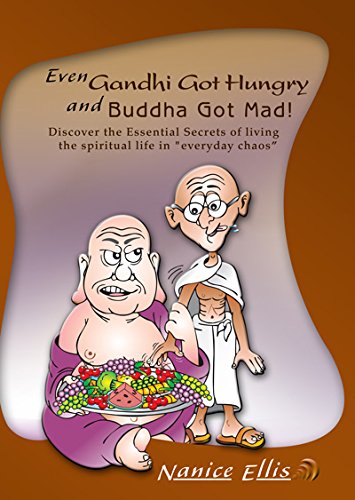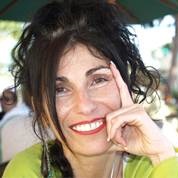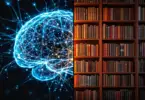By Nanice Ellis
Contributing Writer for Wake Up World
Why is it so difficult to heal emotional trauma? Maybe it is because we do not understand what our emotional wounds really are, and therefore we go about healing in ways that can never work.
When I was young, I was in a horrifically abusive relationship for over a year. Even though I was able to eventually “get out” and save myself, it took me many years to figure out how to heal the deep emotional wounds.
Understanding Emotional Wounds
We tend to think of an emotional wound as the original traumatic experience – as the “thing” that happened to us, but the wound is actually the dis-empowering belief that we developed as a result of the traumatic experience.
[pro_ad_display_adzone id=”110028″]
In the search for emotional security, our natural response to any traumatic event is to make sense of it. We “make sense” of things by creating beliefs. Beliefs that we develop in response to traumatic experiences are Traumatic Beliefs. Because Traumatic Beliefs are disempowering and painful, they become emotional wounds.
The reason many people don’t heal is because they try to heal the original traumatic experience and not the Traumatic Belief. By understanding that emotional wounds are actually the Traumatic Beliefs that we hold about ourselves and/or the world, we have the power to heal.
When a child experiences himself as abandoned, for example, that child forms beliefs around abandonment in order to explain why he was abandoned. The child may answer the question, “Why?” by creating a belief that he was not good enough. The abandonment is the not the wound. The wound is the belief in unworthiness. In this case, healing involves releasing the Traumatic Belief of unworthiness.
Two people can experience the same trauma and have completely different responses, because they develop very different beliefs about the experience.
Traumatic Beliefs Create Emotional Needs
Traumatic Beliefs always create corresponding emotional needs which must be met in order to heal. The catch is that a Traumatic Belief also creates an invisible barrier that keeps the emotional need from being met. For example, if the Traumatic Belief is, “I am not worthy,” the emotional need is feeling worthy. If you could feel unconditionally worthy, the wound would heal. The problem is, if you believe that you are not worthy, you will block the feeling of worthiness because it does not align with your beliefs about worth. This is also why healing is so challenging.
Traumatic Beliefs are Self-fulfilling and Self-Sabotaging
When we have been wounded, we feel justified in holding onto Traumatic Beliefs. Part of us may even think that these beliefs keep us from getting hurt again, and the thought of releasing them makes us feel very vulnerable – without these beliefs, what will protect us? But, Traumatic Beliefs do not protect us in the first place. In fact, these beliefs are self-sabotaging by being self-fulfilling. When we look closely, it becomes apparent that these beliefs actually cause, attract and create more of what we do not want. All beliefs effect the quantum field that creates our reality, but Traumatic Beliefs have an even stronger influence on reality because they are fueled with intense emotional energy. Therefore, if we believe we are powerless, we attract situations to us that support that belief.
Take Full Responsibility
An essential key to healing is taking complete responsibility for your life and for your wounds. As long as you blame the outside world for your pain, you give away your power to heal. This is not about letting others off the hook who have harmed us. This is about empowering yourself to be whole. If you cannot find a way to take responsibility for your life experiences, then begin by taking responsibility for your beliefs. Regardless of what transpired in the outside world, you are the only one who thinks your thoughts and therefore you are responsible for creating and believing any Traumatic Beliefs. This means that you also have the power to release these beliefs, and, therefore, you can heal yourself.
Why are Traumatic Beliefs so Painful?
Traumatic Beliefs disconnect you from who you really are because your true self could never believe that you are powerless or unworthy. When you accept these disempowering beliefs, you experience separation from your true self and this is the cause of pain and suffering. The pain is your inner guidance system alerting you to the disconnection so that you can heal by releasing incongruent beliefs.
The Higher Purpose of Traumatic Experiences
The higher purpose of traumatic experiences is to point our attention to hidden or underlying beliefs that already exist in our psyche. The traumatic experience activates the hidden belief so that we are aware of it, in order to heal. This is the point. You cannot heal something that you are unaware of. The pain directs your attention to the belief that needs to be healed in order for you to awaken.
Four Traumatic Beliefs
In order to heal, it is important that you uncover the Core Traumatic Belief(s) of the wound. There are four Core Traumatic Beliefs: Victimhood, Powerlessness, Worthlessness and Loss. All Traumatic Beliefs fall into one or more of these four categories.
Victimhood
When I was in that horrifically abusive relationship, the greatest of the wounds was the belief that I was a victim; causing me to live in great fear for many years, even after the abuse had ended. Because I was desperate to heal and have my life back, I finally looked deep into my own self. Eventually, what I understood was that I was feeling like a victim well before that relationship had ever manifested. The relationship overtly demonstrated my inner beliefs in the outer world in a way that I could not ignore.
Later, as an adult, the healing was remembering, at the deepest level, that I was responsible for my own life, and that my life was a reflection of all my beliefs. I discovered that the opposite of victim is not survivor. The opposite of victim is creator. When I remembered that I was the creator of my life, victimhood could no longer exist – and the wound was permanently healed.
The key to healing the Traumatic Belief of victimhood is waking up to who you really are and remembering that you are the creator of your life. Maybe you don’t understand how you created something, and you would certainly not consciously create a traumatic event that would make you feel victimized, nonetheless, we unconsciously create from hidden subconscious beliefs, and physical events in our lives give us clues to these underlying beliefs.
Once we become aware of theses disempowering beliefs, we have the opportunity to consciously heal them, by over-turning them, declaring their falsehood and turning toward a higher truth. In this case, the higher truth is I am the creator of my life. True power comes from learning to be a conscious creator, but this can only happen as we flush out unconscious beliefs and we align with the truth of who we really are.
Powerlessness
Even before we experience any traumatic events, most of us are socialized to believe that the world has power over us. So, when a traumatic experience does unfold, the idea of being powerless is already in our belief system, therefore, powerlessness seems an appropriate way to make sense of a negative event.
Healing from the Traumatic Belief of powerlessness is embracing ones intrinsic power – not the power that comes from control, but rather the power that originates in the core of your being and connects you to the universe and all that is. Healing the Traumatic Belief of powerlessness is an emotional journey from powerless to powerful.
Worthlessness
Of all the Traumatic Beliefs, worthlessness runs the deepest. We are programmed to believe that we are unworthy from the time we are very young. So when we experience trauma, and we search internally for a belief that will make sense of the experience, unworthiness quickly answers the question, “Why did this happen to me?”
Of course, unworthiness is a false belief and therefore it must be exposed in order to be released. When it is hidden, there is no need to pay attention but once it causes pain, you must do something about it. The good and bad news is that the pain will not go away until the false belief of unworthiness is released and you cease seeking proof of your worth in the outside world. The world cannot give or take away your worth because your worth is intrinsic and guaranteed. Absolute healing is attained when you discover and claim your unconditional worth.
Loss
Often, when we have an emotional wound, we believe that someone has taken something from us. No matter how hard we try, it appears impossible to retrieve what has been stolen. This search often keeps the wound alive – believing that we have lost something and it must be retrieved keeps us locked in a vicious cycle of perpetual hurt.
Loss does not necessarily create an emotional wound. We all experience loss – loss of an aging parent or loss of a relationship, for example. Loss is part of the flow of life. Grieving is a natural response to loss and it is the process of letting go. However, if we do not let go, loss can turn into an emotional wound. This occurs when a Traumatic Belief is formed about the loss; for example, beliefs like, “no one will ever love me again,” or “everyone I care about leaves me.” Again, it is the Traumatic Belief that creates the emotional wound and not the loss itself.
When loss creates an emotional wound, we often close down and cut ourselves off from the very thing that could heal us. If we develop a Traumatic Belief around losing love, we not only block potential new relationships, we cut ourselves off from self-love and even higher love. In other words, we do to ourselves what we fear others might do to us.
The healing is remembering that the Source of who you really are provides all that you need, if only you ask, allow and receive – by trusting something greater than the physical self, you align with the rhythm of the universe where the idea of loss does not exist. Inherent in all Traumatic Beliefs is the absolute truth of your existence.
How do we actually heal Traumatic Beliefs?
Release Identification with the Wound
When we develop and feed wounds with our attention over the course of years, we begin to identify with the wound, or, better said, we create an identity around the wounded-self. So, now we are not just releasing a wound, we are letting go of our identity. The thing is, you are not and can never be a wounded identity. This is a false belief and a false identity. In order to heal, it is important that you begin to release the identification with the wound, and that you begin to see yourself as whole – not the wounded self, but the whole self. Who are you without this wound? This is who you really are, and this is who you must become again.
Meet Your Own Emotional Needs
Emotional wounds are often left open because we continue to look to others to meet our emotional needs. In order to heal, we must take responsibility for our own emotional needs and we must find ways to meet them. So, instead of looking to others for love, for example, we must love ourselves. By giving ourselves love, we fill the wound, and we heal.
Transformational Forgiveness
Transformational Forgiveness is not about forgiving another or forgiving ourselves, as much as it is about letting go of the beliefs that keep us trapped – as the prisoner of unhealed wounds. Ask yourself, “Do I want to heal more than I want to hold onto these beliefs?” If the answer is yes, it is time to let go of disempowering false beliefs.
Allow Emotions to Process Through
In order to heal an emotional wound, emotions must be able to “process through” until completion. If we allow our emotions to come up over and over again without resolution, we are actually reactivating the wound and each time we do, it magnifies. Healing requires resolution. This means feeling your emotions completely and not pushing them down or away. The healing comes when you allow your emotions space to be experienced until the process is complete. In order to allow emotions to “process through” you must get in your body. Emotional wounds are stored in the body, and therefore the way to release them is by getting in your body and feeling your emotions until the process feels complete.
Revision
Since the mind does not know the difference between real and imagined, it is possible to go back to a past event and revise it in such a way that the wound automatically heals. The key to successful revision is giving your past-self a new set of beliefs that empower him or her to know your worth, power and connection to who you really are. In this way, you can revise your past-self to speak the truth, set a boundary or exercise personal power in a way that allows your past-self to rise up; ultimately avoiding the emotional trauma or responding to the traumatic event in a way that no wound was created.
Look for a Deeper Truth
For me, my complete healing came from the realization that the person whom I thought hurt me was actually in my life to save me, by physically demonstrating the emotional abuse that I was imposing on myself. Without him serving me in this way, how would I have been able to identify my feelings of victimhood, worthlessness and powerlessness that I carried from childhood? By understanding this deeper truth, my emotional pain transmuted into gratitude. There is always a deeper truth. If you haven’t uncovered a truth that sets you free, go deeper, and keep going until you find it.
Rise Above
Every thought and belief has a coinciding vibration. Fear is at the low end of the vibratory spectrum while love is at the high end. Emotional wounds are low vibratory beliefs about oneself and/or the world. The wound exists at a low vibration and it keeps you stagnated at this low vibration. If you were to consistently raise your vibration to a higher vibration and keep it there, the wound could not exist. In other words, if you turned your full attention toward love and forgiveness, the wound would dissolve because it cannot exist at a high vibration.
The Commitment to Heal
Healing requires commitment and consistency. Because trauma wires your brain for disempowering beliefs, emotional healing requires the re-wiring of your brain for empowering beliefs; this involves the development of new conscious thought patterns that are consistently practiced over a period of time.
Enlisting the help of a healing professional to assist you may exponentially quicken the healing process, but in the end you must do it for yourself. In healing yourself you discover the strength, courage and power to live your life the way it was intended to be lived. If you are here to help others heal, maybe you access the skills to do so, that could not have been acquired in any other manner than going through the process yourself.
The ultimate healing is the awakening to your power and worth. You cannot remember that you are unconditionally worthy and intrinsically powerful and still maintain emotional wounds. There is nothing that cannot be healed through the power of knowing your Real Self.
Copyright: Nanice Ellis 2019. All rights reserved
Even Gandhi Got Hungry and Buddha Got Mad
From the editor…
 It’s easy to express your spirituality when life is going the way you want it to, but what happens in the middle of everyday chaos, when your days are not long enough, your car breaks down, and your significant other is driving you crazy?
It’s easy to express your spirituality when life is going the way you want it to, but what happens in the middle of everyday chaos, when your days are not long enough, your car breaks down, and your significant other is driving you crazy?
Nanice Ellis’ book “Even Gandhi Got Hungry and Buddha Got Mad!” is not about Gandhi… or Buddha — it is a book about you and your spiritual journey through the chaos of daily life. It is the challenge of the modern day seeker to find his or her spiritual center. This book will help you to discover the secrets to making every day the spiritual adventure it is meant to be, and what it really means to be a spiritual being having a very human experience…
“Even Gandhi Got Hungry and Buddha Got Mad” is available here on Amazon.com in paperback and kindle editions. Or check out Nanice’s other publications here on Nanice.com
About the author:
Nanice Ellis has been a professional Life Coach for over 20 years, successfully coaching women and men from all over the world. She is also an author, Theta Healer and Master Neuro Linguistic Practitioner.
Helping people to make quantum jumps in their lives, Nanice’s very unique coaching style is often referred to as the “Nanice Effect”. By using powerful and proven manifestation techniques, Nanice coaches people to tap into the power of the Universe and live their dreams, bridging the gap from the imagination to the realization of that dream. She works with leaders, coaches, healers and anyone who wants to live life to the fullest. You can learn more about the coaching programs offered at: Coaching Programs with Nanice.
Nanice is the author of several books, including the inspirational “The Infinite Power of You!” and “Even Gandhi Got Hungry and Buddha Got Mad!”, and her latest book, “Is There a White Elephant in Your Way? The Guidebook for Awakening and Self Empowerment” She is also the host of radio show Chai with Nanice. Her books are available at Nanice.com/6/Books and right here on Amazon.
Connect with Nanice at Nanice.com.
Recommended articles by Nanice Ellis:
- How To Help Others Spiritually Awaken
- Overcoming Negative Thinking – The #1 Cause of Chronic Depression
- How to Heal Emotional Trauma
- Raising Awake Children in a Broken School System
- Escaping the Matrix of Depression – The Truth About Depression Shall Set You Free
- Tired of Being a Negativity Sponge? 12 Ways to Prevent Energy Infiltration and Reclaim Your Energy
- Is Ayahuasca Mother Nature’s ‘Red Pill’?
- The 5 Stages of Awakening – Signposts and Pitfalls on the Path of Consciousness
- Are You More Awake Than Your Family? 12 Ways to Heal Relationships When Your Family Is Still Asleep
- Why You Should Forgive Your Parents… and How To Do It!
[pro_ad_display_adzone id=”110027″]








